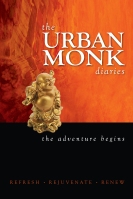The wind was howling through the pine forest as we shut the windows and settled down by the fireplace. The crisp mountain air felt refreshing.
Oops! Here goes the power again! Well, we weren’t surprised. A log cabin 20,000 ft up in the mountains, in the midst of wilderness is not a place where you can take anything for granted! In this place, nature reminds you who the real boss is!
The conversation slowly came to a lull. As if on cue, the group began to stare contemplatively at the dance of the flames in the fireplace.
“Well, I guess, it’s a candlelight dinner today”, Ayesha cheerfully declared.
She lit a few candles and kept them on the bookshelves and the makeshift kitchen cabinet. The glow of light lit our weary faces.
Hamish then stood up and stretched. He was the restless one in the group. He walked over to the book shelf
“Might as well check these out”, he said and rummaged through the lodge owner’s book collection. He picked one up and settled down next to me, with a satisfied grin as if to say “Now I got something to spend time on”.
I let him read in peace. I turned my attention back to the wind. It was telling a story and I was listening intently.
A half hour later, Hamish chuckled loudly.
“Guys, check this out”, he said. “There was this guy who loved the reflection of his face in the lake so much, that he tried to grasp it, fell into the lake and drowned.”
“Oh…you are reading about Narcissus?”, Jane suggested from her seat at the fireplace. “It’s another of those greek love tragedies”.
“Yeah..apparently the moral of the story is – thou shall not be vain and conceited of thy own beauty“, Hamish made a grand gesture with his hand as if he were declaring judgment on everyone in the room! We chuckled.

(Painting by François Lemoyne, 1688-1728. Hamburger Kunsthalle.)
Did you find out the clues? I asked him
“What clues?” he asked
Every great myth has 3 things – a gripping story, a moral message and hidden clues to Aha!
You have so far, read out the story and declared the moral. Did you find the hidden clues?
“No…where are they?” he flipped through the pages hurriedly, as if he was expecting them to fall out of the book.
The first clue is in the words of the blind seer, called Tiresias!
“Oh, him? There was just a passing reference to him in the book. I didn’t give it much attention!”, he confessed
All clues are like that. You never find them unless you are looking for them.
When Narcissus was born, Tiresias was asked whether the child would live a long, happy life. He replied “if he never know himself“.
“That doesn’t seem much of a clue”, Jane said, with a puzzled look. “It just sounds like he was making a prophecy that Narcissus would die when he sees his face for the first time”.
I’ll tell you the next one. Angered by Narcissus’s pride, one of the nymphs prayed to heaven
“So may he himself love, and not gain the thing he loves!”
“Hmmmm…”,said the others in unison, as if they were waiting to see a pattern
The third clue comes from Narcissus when he looks at his reflection in the water
The author asks “why vainly seek to clasp a fleeting image? What you seek is nowhere”
“He’s obviously referring to Narcissus’ reflection!”, Ayesha suggested.
Yes, but then he finally declares “I know now, my own image”
There was silence in the log cabin. You could hear a pin drop.
Ayesha finally broke the silence. “What is this story really about?” Ayesha asked in hoarse voice
Ah! The clue is in the title of the book itself. Ovid, the author called it ‘Metamorphosis’ – which implies the stories are about transformation of the self – much like a caterpillar turning into a beautiful butterfly.
“There is a vain and proud narcissus in each of us, isn’t there?”, asked Jane. “By writing about Narcissus, he is talking to all of us”
Yup.
“But when is the transformation? What is the breakthrough we are supposed to achieve through the story of this character?”, asked Hamish
For that, you must ask: “What exactly did the author see in the lake?”
Ovid is, in a way, giving us a clue to solve Grasshopper’s riddle, through the story of Narcissus.
Ovid says “That which you behold is but the shadow of a reflected form and has no substance of its own.
With you it comes, with you it stays, and it will go with you – if you can go.”
We know what Narcissus saw. His beautiful face!
But this is what the author saw.
He saw his original face.
And it was empty of essence.
The silence was now heavy.
The firewood crackled then, as if it was having a laugh at the inhabitants of the log cabin.
“Oh! Crap! No wonder he wanted Narcissus to die..he must have been so depressed!” Jane said
Not really. Having seen the face, Ovid says:
“Death is nothing to me, for in death, I shall leave my troubles.”
His confidence came when he saw his original face. He knew what he was then and there.
Ovid helps us solve the mystery, through direct realization.
“What happens when you see your original face?”, asked Ayesha
Ovid says “When they prepared his funeral pyre, they could not find his body.”
That’s really the giveaway.
When you see your original face, you become immortal
You die as a wave. But you realize yourself as water
Both life and death matter not, when you are immortal.
That’s the final taste of freedom
“Metamorphosis”, Hamish declared.


What a beautiful way to understand the story of Narcissus. Thank you, love :)